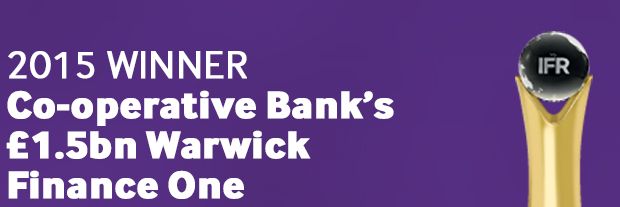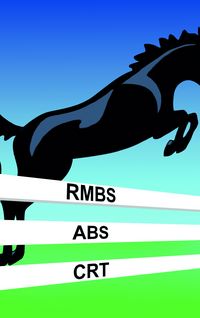Back from the brink
In a year dominated by UK RMBS supply, the Co-op managed to sell the largest post-crisis non-conforming deal, a massive £1.5bn full-cap trade that helped the UK lender rebuild its weakened capital base.
For the European structured finance market to find its feet once again, it needs to progress beyond a mere funding tool to fulfil strategic objectives. No trade exemplified this much needed progression more than the Co-op’s Warwick deal in 2015.
Bondholders took over the UK lender at the end of 2013 through a debt-for-equity swap, following the shock discovery of a £1.5bn capital hole. A year later, in December 2014, it became the only British bank to fail the Bank of England’s stress test.
The bank needed to bolster its Common Equity Tier 1 ratio and fast. Securitisation provided the tool to do so.
Selling down the bank’s non-core “Optimum” portfolio was seen as the best way to bolster its CET 1 ratio, as the non-conforming portfolio requires the bank to set aside more capital than prime home loans.
While the portfolio is punitive for banks to hold, its risks are well understood by the ABS market. Optimum was inherited from the Britannia building society, which it had securitised through the Leek RMBS programme.
For the Co-op to deconsolidate the portfolio and achieve significant risk transfer, thereby bolstering both its leverage ratio and regulatory capital, it would have to sell right down the capital structure – no mean feat given the limited depth of sterling liquidity.
Not only did the Co-op achieve this with Warwick One, but it actually upsized the trade from £1.2bn to £1.5bn on the back of demand. It also ended up retaining only 65% of the £1.088bn Triple A notes, having originally planned to retain 70%.
The Co-op also had the added difficulty of having to sell the deal’s call option. This was done through principal residual certificates that give the holders control of the refinancing at the coupon step-up date.
A banker said it was the largest-ever sterling-only non-conforming full-cap structure trade.
Most importantly, the deal bolstered the bank’s CET1 ratio by 0.9 percentage points to 13.9%.
Warwick One laid the groundwork for further sell-downs of the portfolio, with the Co-op pulling off the larger £1.65bn Warwick Two trade in September. This deal was sold into a much more challenging market, however, and the Co-op had to retain 80% of the Class As.
The Optimum portfolio stood at £6.5bn at the start of the year, but now the Co-op has been able to sell down more than half of this. Just £3.1bn remains on its balance sheet after Warwick One and Two.
Bank of America Merrill Lynch was the deal’s sole arranger and a joint lead with Citigroup (Class A only) and Morgan Stanley (Classes A to D).
To see the digital version of the IFR Review of the Year, please click here .
To purchase printed copies or a PDF of this report, please email gloria.balbastro@tr.com .



